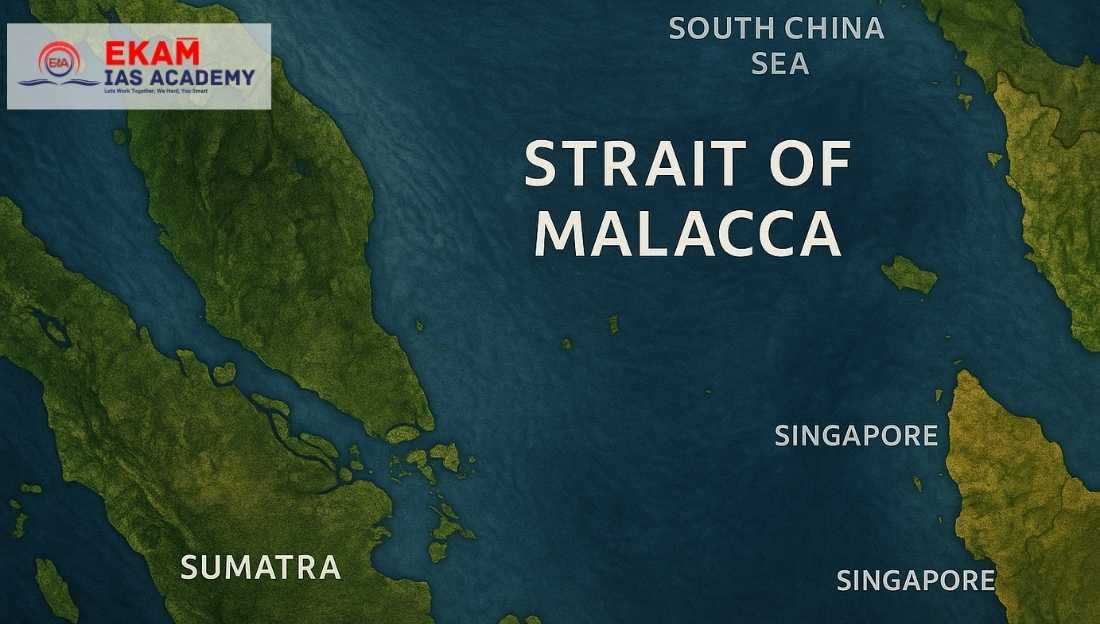A new cyclonic circulation recently formed over the central region of the strait, reaching 5.8 km altitude, drawing attention to its strategic and climatic relevance.
Geographical Features
- Connects the Andaman Sea (Indian Ocean) to the South China Sea (Pacific Ocean).
- Lies between Sumatra (Indonesia) to the west, and Malaysia and southern Thailand to the east.
- Named after the historical Malacca Sultanate (1400–1511).
- Approximate length: 890 km; depth: around 25 meters; total area about 65,000 sq km.
- Hot, humid tropical climate influenced by the Northeast Monsoon (winter) and Southwest Monsoon (summer).

Economic and Strategic Significance
- Acts as a major global shipping corridor, connecting Europe, West Asia, and East Asia.
- One of the busiest maritime routes globally, handling over one-fourth of the world’s traded goods.
- Singapore, Malaysia, and Indonesia jointly patrol and manage maritime security in the strait.
Importance for India
- Nearly 60% of India’s maritime trade and almost all LNG imports pass through this strait.
- Crucial for India’s energy security, foreign trade, and Act East policy.
- The strait is a strategic choke point for China, heavily dependent on it for oil and trade routes — termed the “Malacca Dilemma.”
Conclusion
The Strait of Malacca is not just a commercial waterway but a strategic geopolitical asset, critical for global trade, regional security, and India’s maritime interests.
This topic is available in detail on our main website.





